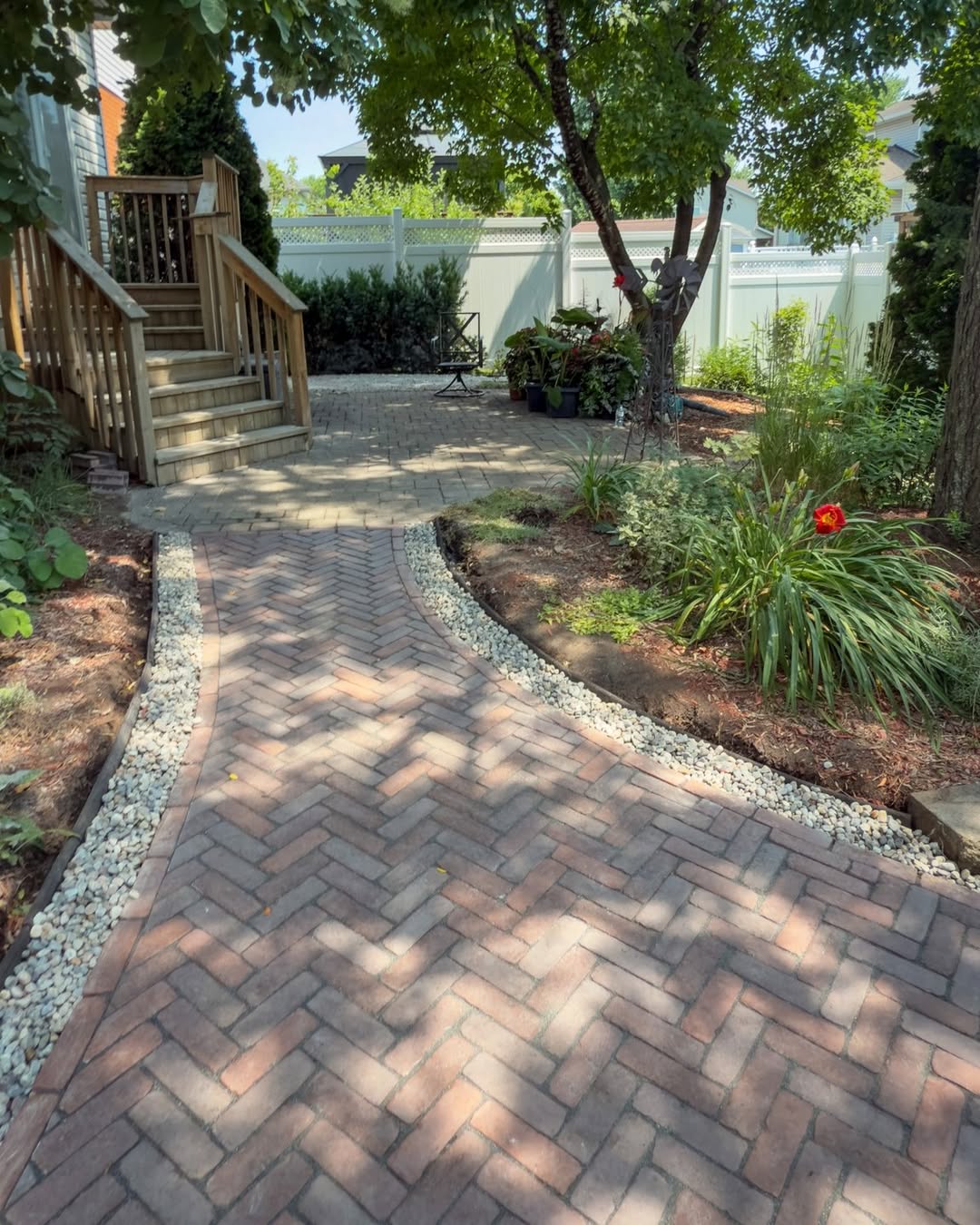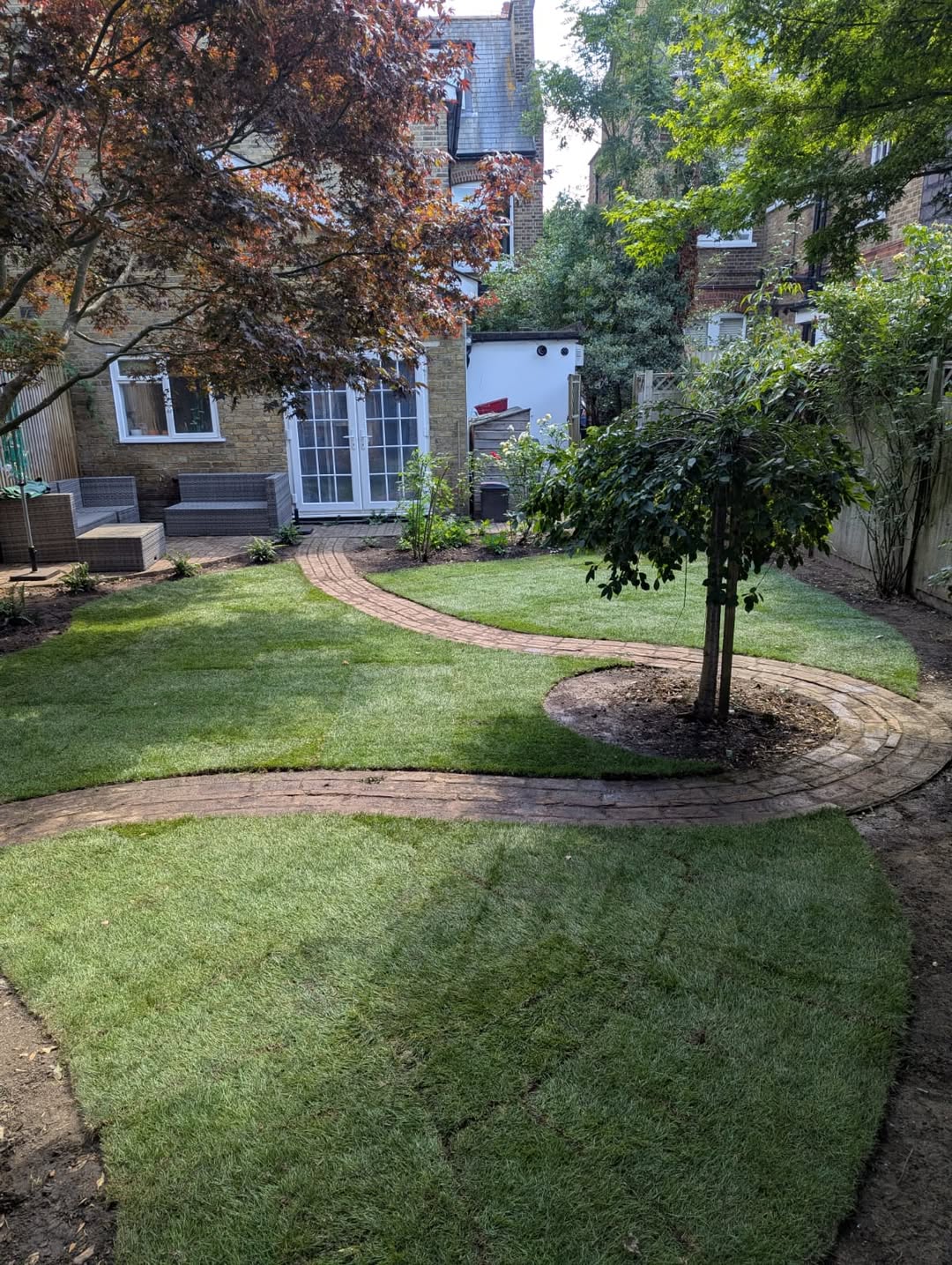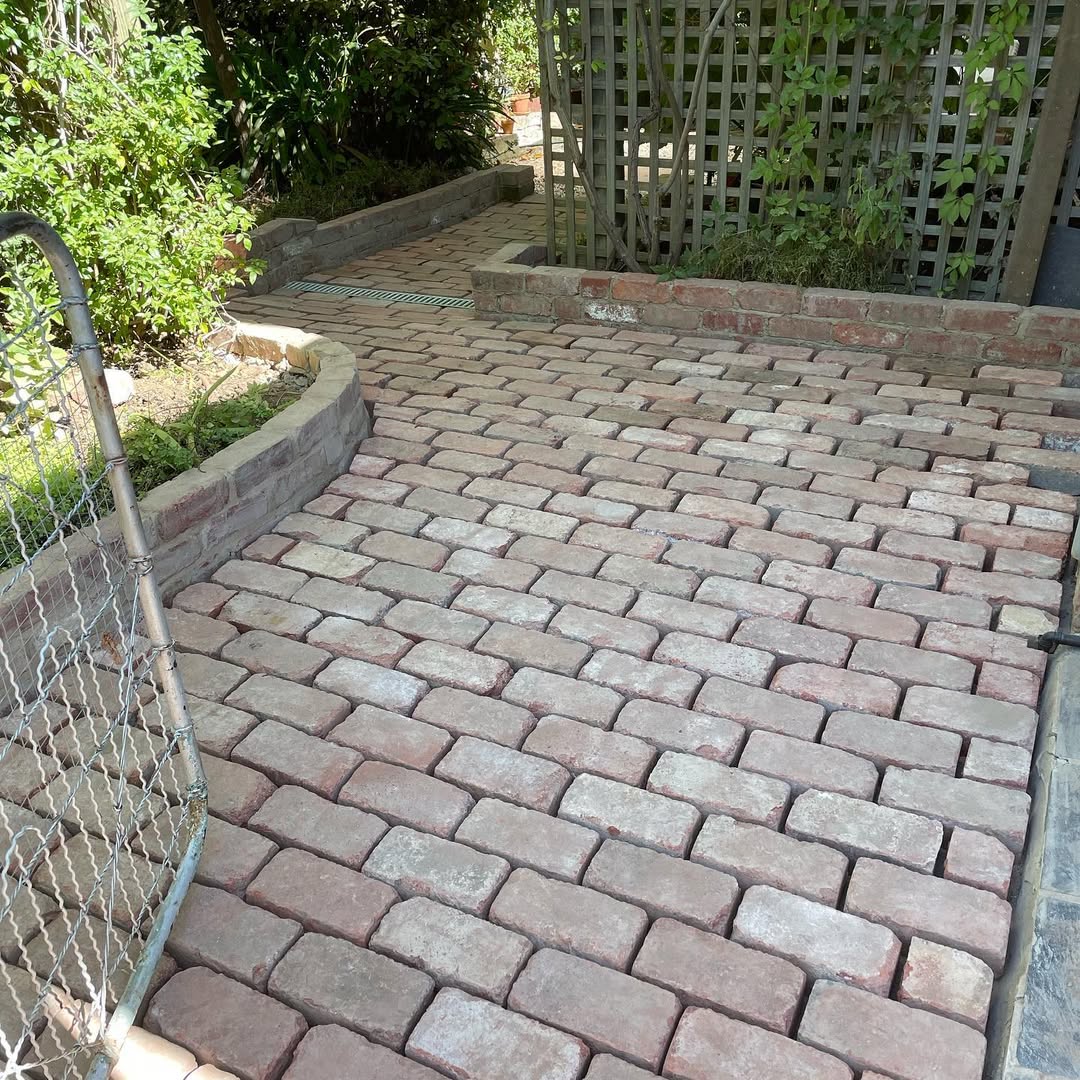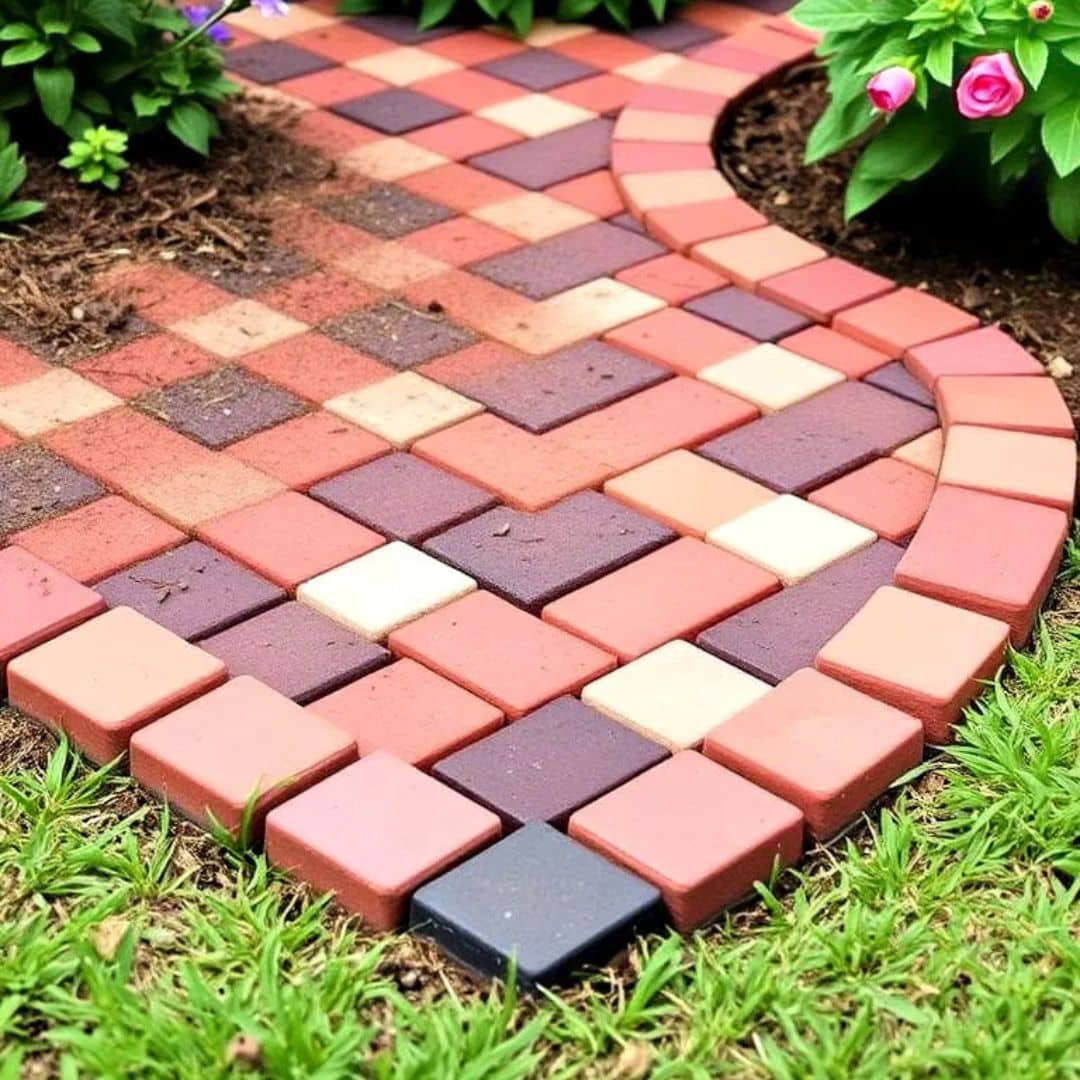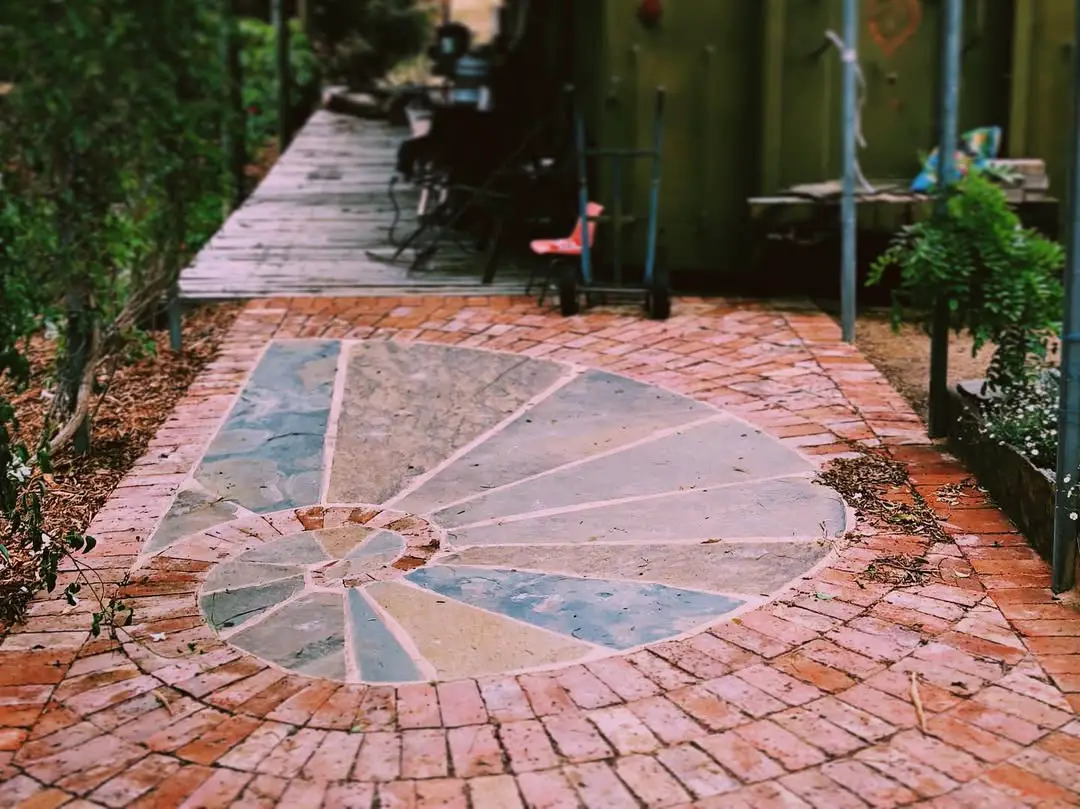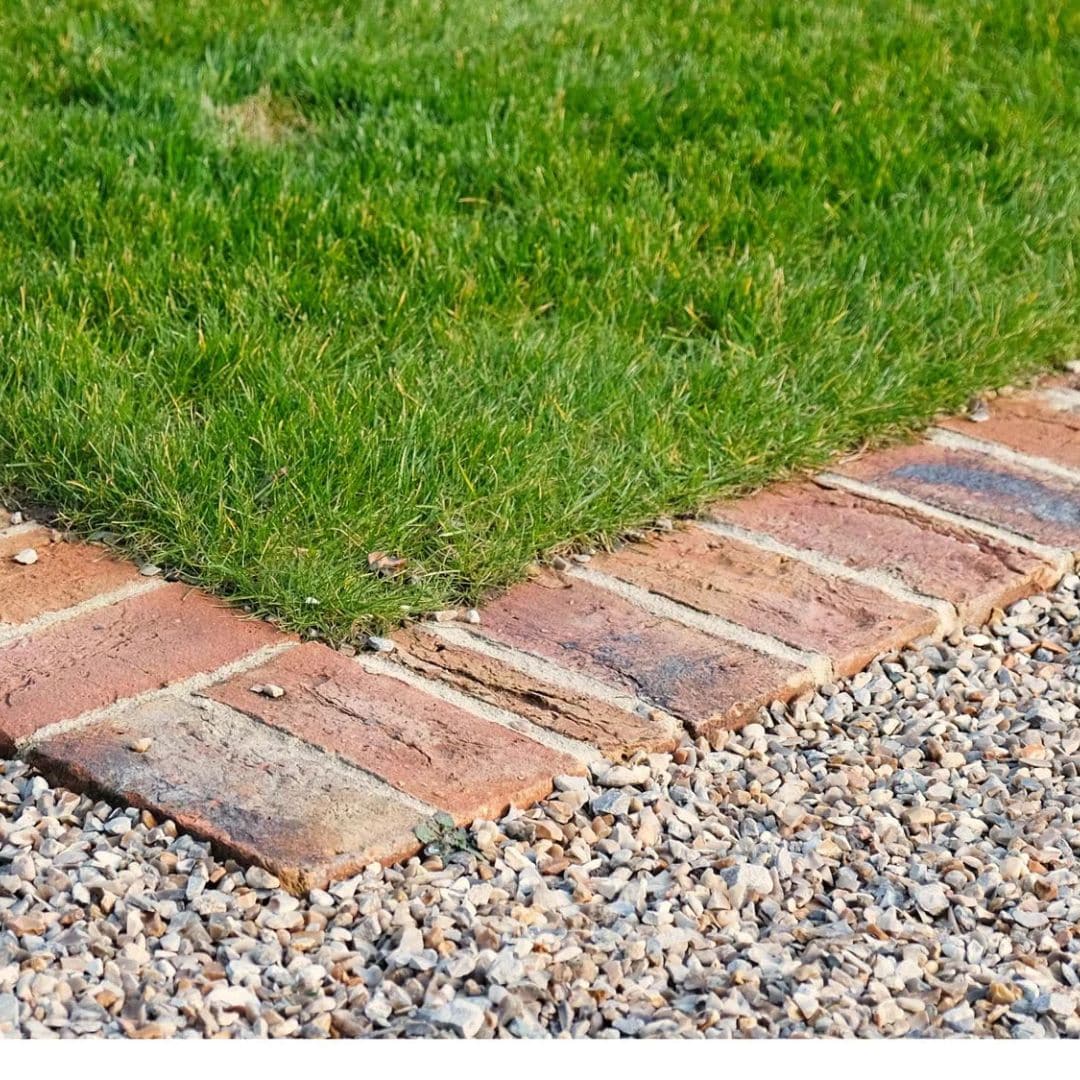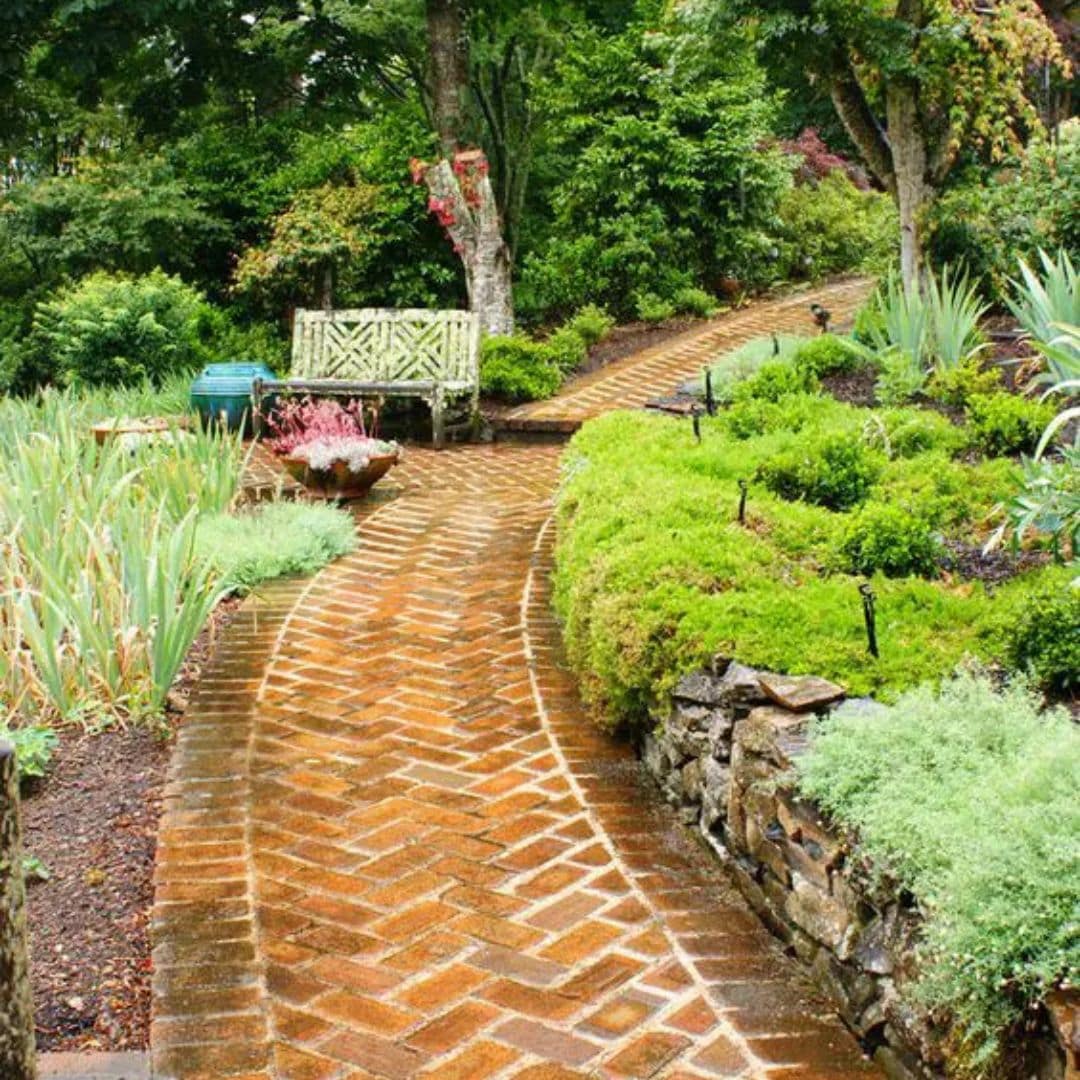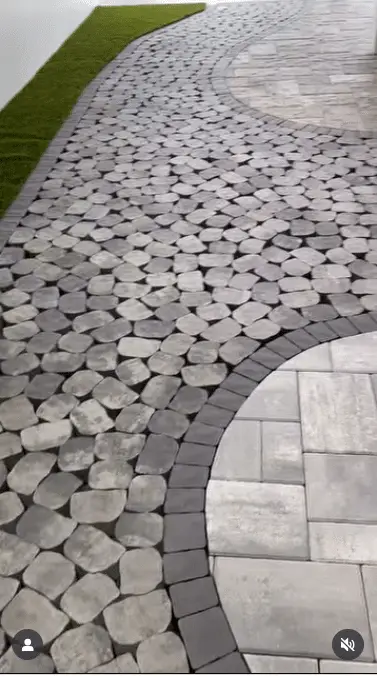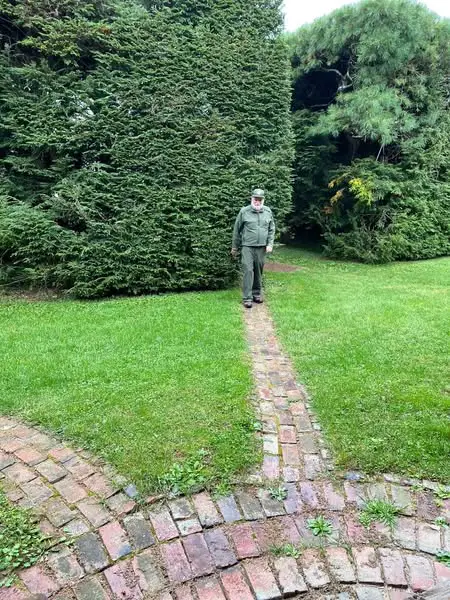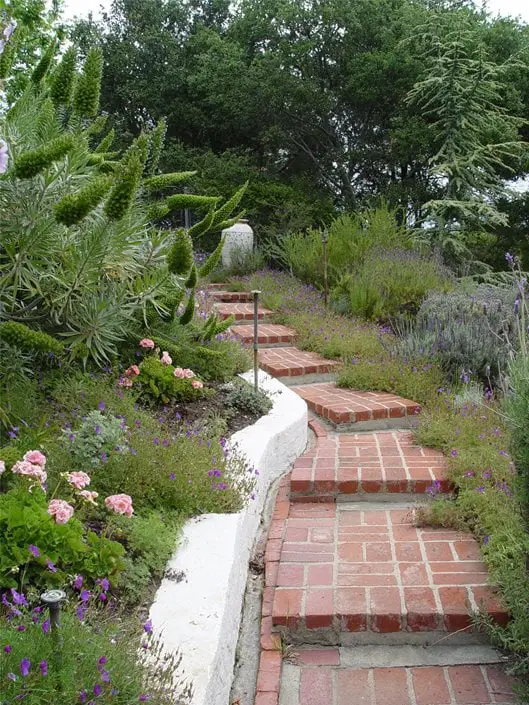Brick Pathway Ideas – Brick pathways are a timeless and versatile landscaping feature that can add charm, character, and functionality to any outdoor space. When designing a brick pathway, one can choose from a variety of patterns, such as herringbone, basketweave, or running bond, each providing a unique visual texture. The color and size of the bricks also play a crucial role—classic red bricks create a traditional, rustic feel, while gray or multi-toned bricks offer a modern, contemporary look. For a more organic design, bricks can be laid in curved or winding pathways that naturally guide visitors through gardens or yards.
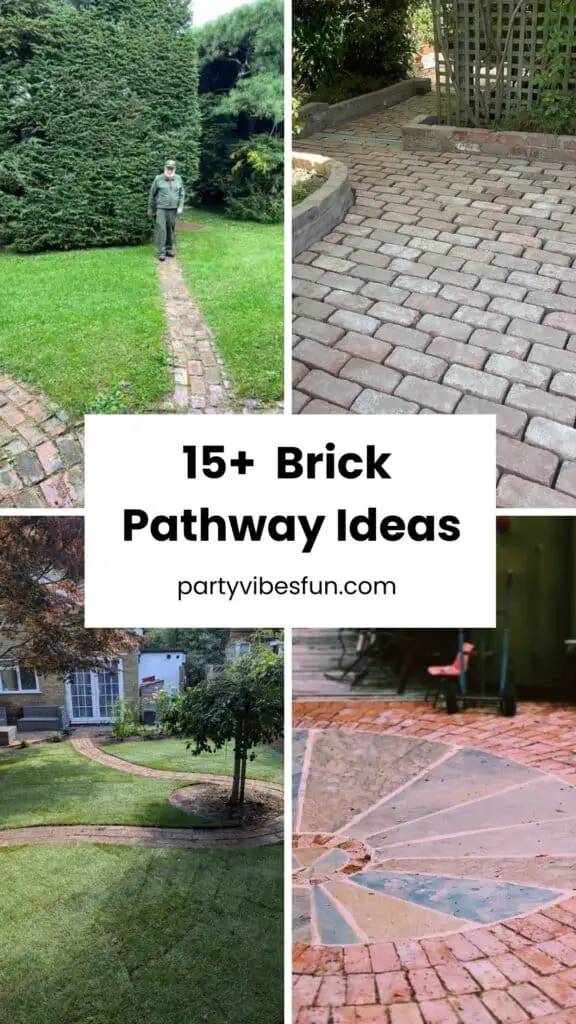
Incorporating accents like stone borders, gravel inlays, or integrated lighting enhances both the aesthetic and functionality. Brick pathways are durable, low-maintenance, and weather-resistant, making them suitable for high-traffic areas, garden paths, or entryways. Overall, they provide a perfect balance of beauty and practicality, transforming ordinary outdoor spaces into inviting, picturesque environments.
Brick Pathway Ideas
Classic Herringbone Pattern
Credit @hansenottawa
The herringbone pattern is a timeless design where bricks are laid in a zigzag formation. This pattern adds visual movement and a sense of sophistication to any garden or walkway. Ideal for narrow or wide pathways, it can guide the eye along the path while creating a sense of depth. Pairing this with neutral-toned bricks enhances a classic or traditional landscape. The interlocking nature of the herringbone layout also increases durability, making it perfect for areas with frequent foot traffic. Adding edging with contrasting bricks can further define the path’s elegant geometric shape.
Curved Garden Pathway
Credit @bloominmarvellousuk
Curved brick pathways offer a whimsical and organic feel to outdoor spaces. Instead of a straight route, gentle curves can guide visitors through flower beds, shrubs, or vegetable gardens. This design breaks the rigidity of straight lines and encourages exploration. Using bricks of varying shades creates natural texture and complements surrounding greenery. The edges can be framed with low-growing plants, like lavender or creeping thyme, softening the look. Curved pathways work particularly well in cottage gardens or backyard retreats, adding a sense of intimacy. The natural flow also makes a garden feel larger and more inviting.
Rustic Reclaimed Bricks
Credit @caswolfe_landscapes
Using reclaimed bricks gives pathways a charming, vintage appearance. These bricks often come with weathered edges, faded colors, and textures that tell a story, offering a unique character to the walkway. The uneven surface creates a rustic aesthetic perfect for cottage gardens or countryside landscapes. Pairing these bricks with gravel or moss between joints enhances the natural, old-world feel. Reclaimed bricks are also eco-friendly, giving new life to discarded materials. The subtle color variations—from reds to earth tones—bring warmth to any outdoor space, creating a path that feels cozy, authentic, and full of personality.
Checkerboard Brick Pathway
Credit @plusmood.com
A checkerboard pathway combines bricks and contrasting pavers, such as grass or stone, to create a striking visual pattern. This design is playful yet elegant, making it suitable for modern gardens or formal entrances. Large square sections of brick alternate with green grass or colored stones, providing texture and color contrast. The checkerboard effect can also break up long stretches of a walkway, making the garden feel more dynamic. This pattern encourages interaction with nature, as walking on soft grass or moss between bricks adds tactile appeal. It’s perfect for pathways that double as decorative garden features.
Circular or Spiral Pathways
Credit @dowiedesigns
Circular or spiral brick pathways create a dramatic focal point in landscapes, perfect for garden centers, fountains, or seating areas. Bricks can be arranged concentrically around a central feature, giving the area symmetry and a sense of unity. Spirals add an enchanting, meditative feel, leading visitors naturally toward the heart of the garden. Varying brick tones can enhance depth, while curved edges create softness. This design works beautifully with flower beds or low hedges lining the path. A spiral pathway not only serves as a functional walkway but also as an artistic statement, adding sophistication and flow to outdoor spaces.
Mixed Brick and Gravel Path
Credit @https://storage.googleapis.com
Combining bricks with gravel offers texture and visual interest while maintaining functionality. Bricks can be used as borders or stepping zones, with gravel filling the gaps to create a permeable and drainage-friendly pathway. This mix complements both modern and rustic gardens and allows flexibility in shaping curves or irregular layouts. The gravel can come in neutral or contrasting colors, enhancing the brick’s warm tones. This design is low maintenance, reduces water runoff, and creates a casual yet stylish walkway. Planting low ground covers between gravel sections softens the overall look, blending the path harmoniously into the surrounding landscape.
Diagonal Brick Pattern
Credit @shelterness.com
Diagonal brick pathways introduce a dynamic perspective, making small spaces feel larger and longer. Laying bricks at a 45-degree angle to the path’s edges creates energy and movement, catching the eye with every step. This pattern works well in straight or gently curved paths and pairs beautifully with both modern and traditional landscapes. The diagonal layout allows for creative borders, like contrasting bricks or stones, to frame the walkway. This style also improves traction, as the angled bricks provide natural grip. The diagonal approach turns a simple path into a bold statement, offering an unexpected twist on classic brick design.
Mosaic or Patterned Bricks
Credit @nicolock_nyc
Mosaic pathways incorporate bricks of different colors, sizes, or shapes to create decorative patterns or motifs. This design allows for creativity, whether forming geometric shapes, floral motifs, or abstract designs. Ideal for patios, garden entrances, or courtyard walkways, patterned bricks become a functional work of art. Using contrasting tones, like reds, yellows, and browns, adds vibrancy, while integrating stones or tiles enhances texture. Mosaic paths provide a sense of personality and craftsmanship, elevating ordinary walkways into conversation pieces. They are perfect for homeowners looking to showcase artistic flair and make their garden uniquely memorable.
Narrow Sidewalk Brick Path
Credit @Saint-Gaudens National Historical Park
For small or narrow spaces, a linear brick pathway offers simplicity and elegance. Thin, straight paths can guide guests to entrances or along fences without overwhelming the landscape. The design works well with low brick borders or edging to keep plants in check. Laying bricks in a stretcher bond or running bond pattern ensures a clean, classic appearance. Narrow pathways are also ideal for garden alleys or spaces between buildings, adding functionality without sacrificing style. By choosing complementary brick tones and incorporating subtle curves or greenery, even a narrow path can feel spacious, inviting, and perfectly proportioned.
Brick Steps and Terraced Path
Credit @landscapingnetwork.com
Brick pathways can transform slopes into functional terraces with steps or layered platforms. This approach not only solves elevation challenges but also adds architectural interest to the landscape. Using bricks for steps and surrounding terraces maintains cohesion while providing warmth and texture. Adding low walls, planters, or lighting alongside the steps enhances safety and aesthetics. Terraced pathways work well in hilly gardens, backyard landscapes, or entrance steps leading to patios. The layered design creates rhythm and movement, guiding visitors upward or downward gracefully. Combining bricks with stone or gravel can add further visual contrast, making the terraced path a striking feature.

